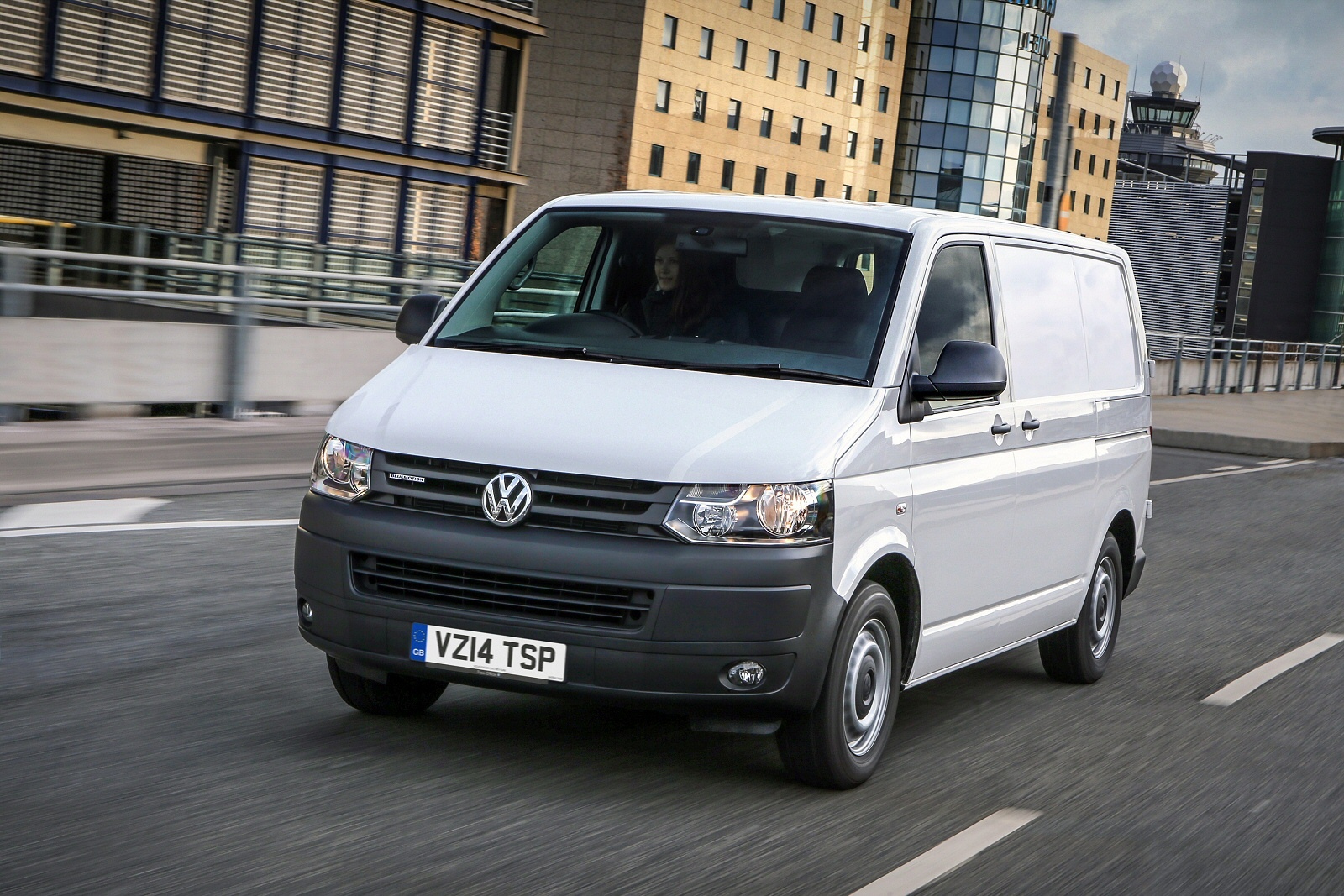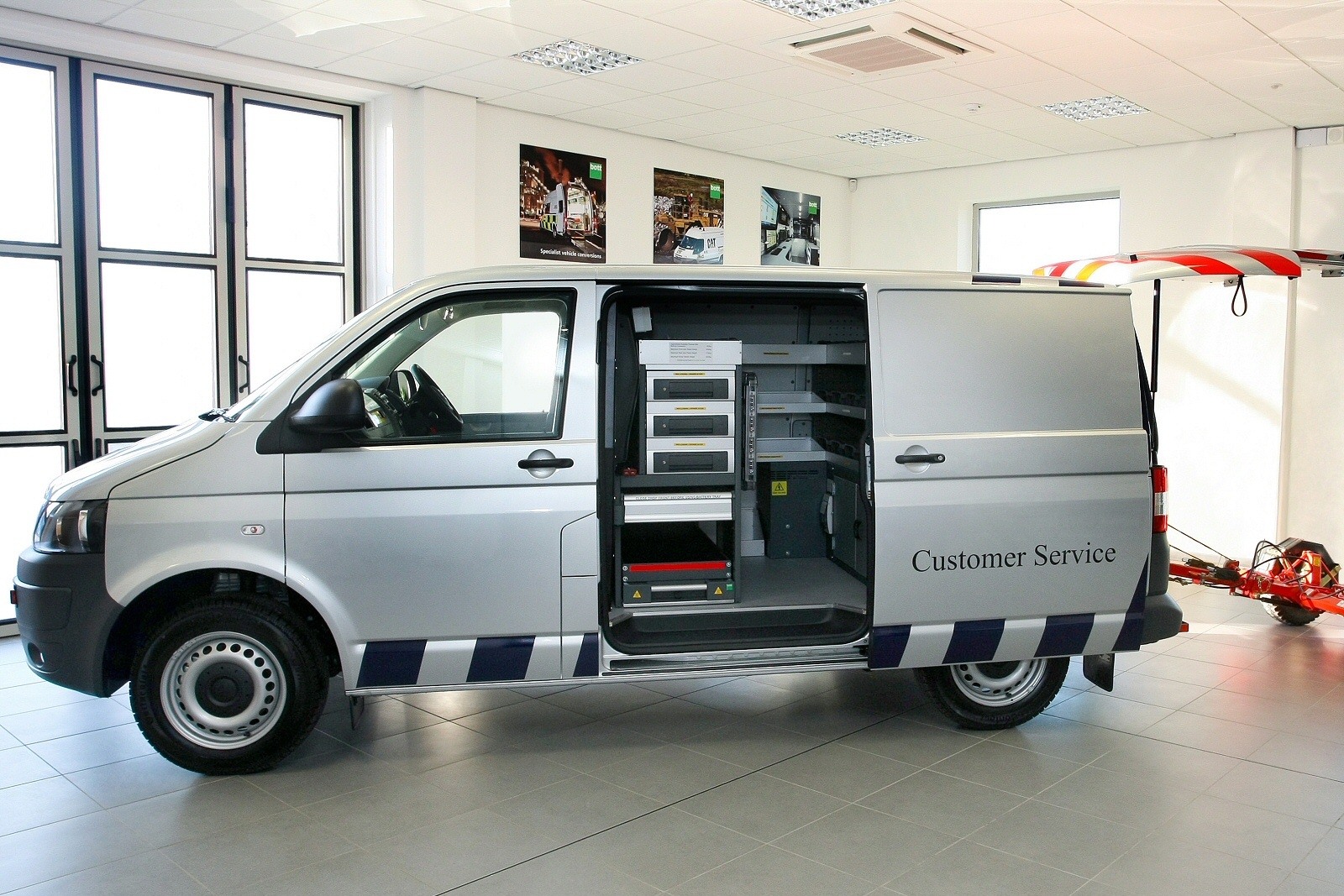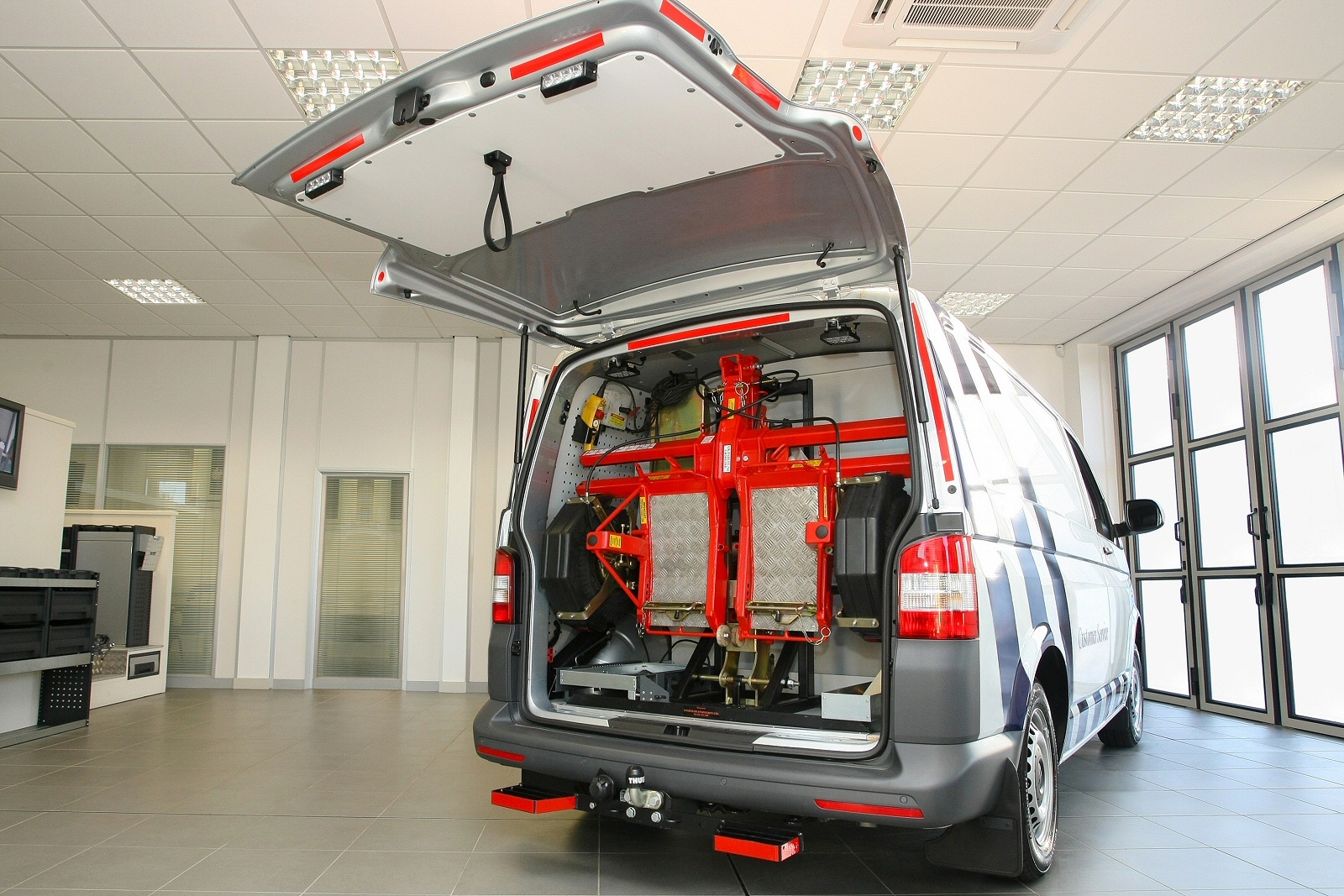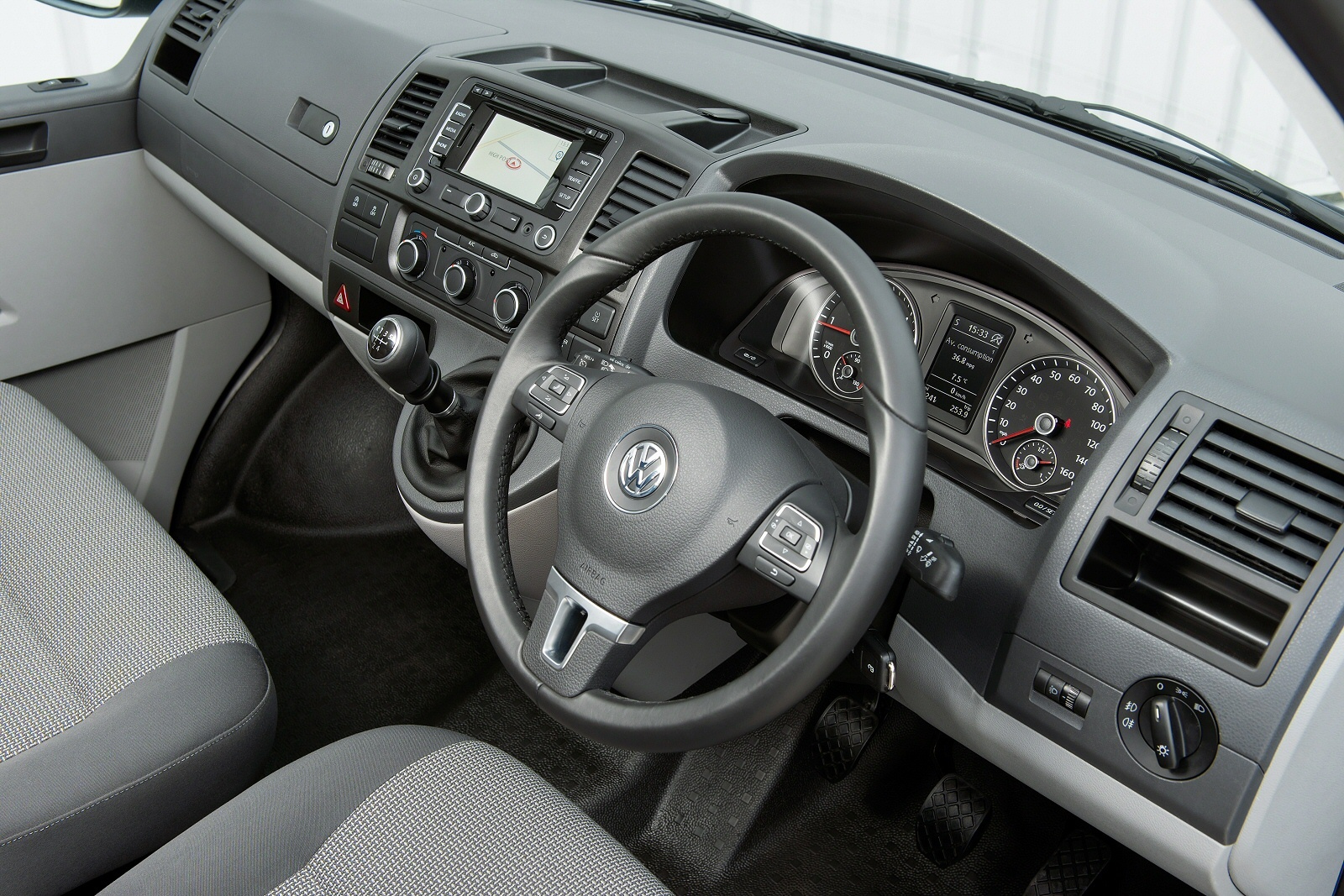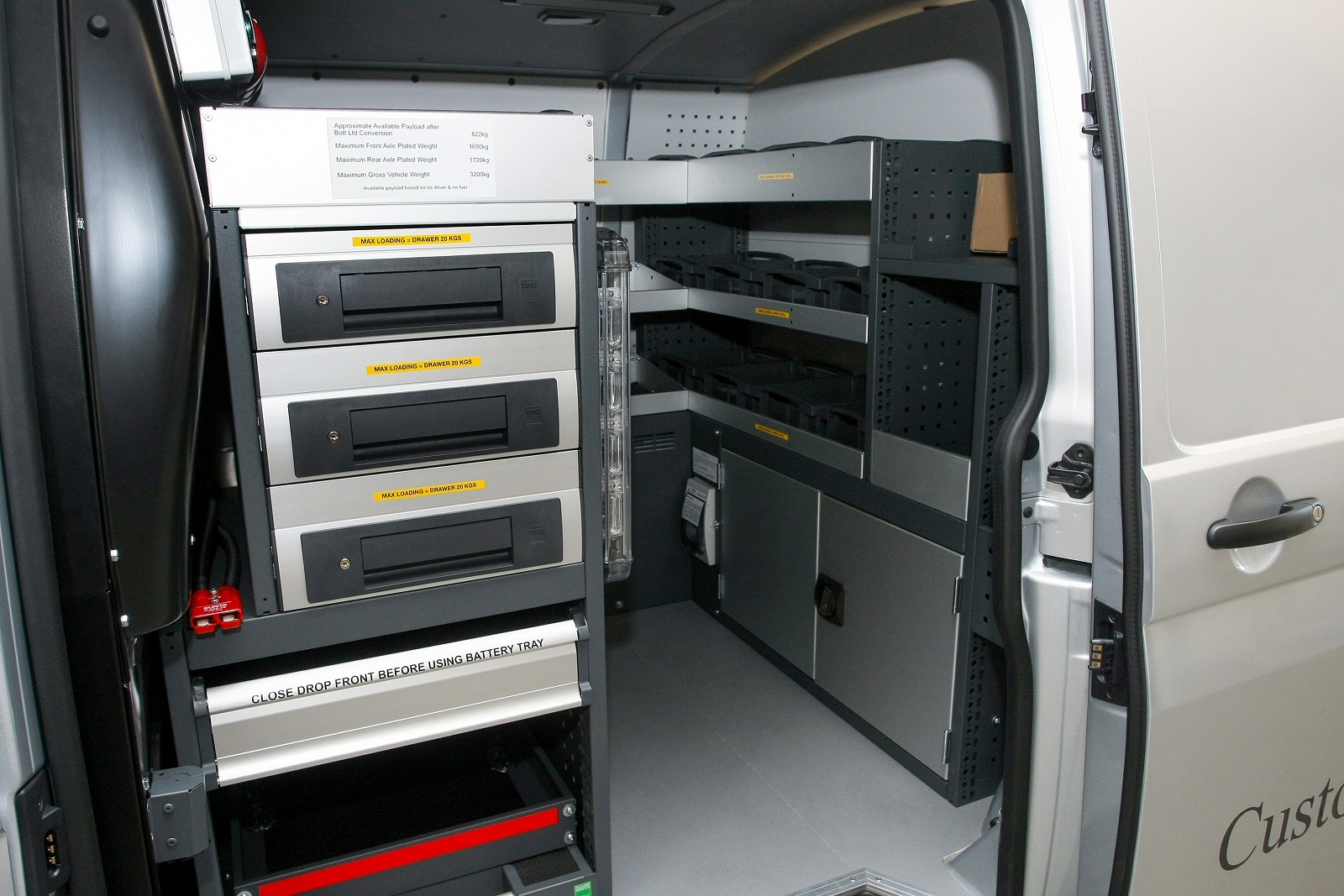Volkswagen Transporter looks a strong package these days – and the range now includes a frugal BlueMotion model.
These days, the Transporter is bang up to date in the engine department but that wasn’t always the case. VW persevered with direct injection technology while most rival products were squirting diesel into their cylinders from a high pressure common-rail. Common-rail systems tend to bring improvements in refinement and efficiency and the modern Transporter has not one but four engines using the technology.
They’re all 2.0-litre four-cylinder diesels, ranging from an 83bhp entry-level one through 98bhp, 111bhp and 138bhp units in the middle of the range to a lusty 178bhp flagship. The power outputs of the lesser engines don’t sound like much to move a fully-laden Transporter but even the 83bhp unit has 162lb/ft of torque from 1,250rpm. Go for the 178bhp engine with its twin turbochargers and there’s 295lb/ft available from 1,500rpm. It’s enough to help it complete the 0-62mph sprint in under ten seconds and few vans are faster.
The latest Transporter looks a sharper proposition but not by much. The slimline front grille merges with the headlights to form a band running across the vehicle’s nose in a fashion not dissimilar to many VW passenger cars. The headlights feature LED running lights and there’s a large air-intake carved into the lower bumper but this van is clearly recognisable as a Transporter. There’s a similar state of affairs inside where one of the van sector’s highest quality interiors continues largely unmolested. The instrument cluster has a classier look about it but the solid controls and hardwearing plastics remain in evidence.
The Transporter comes in long or short wheelbase guises, these giving it a total length of either 4,892mm or 5292mm. Then there are low, medium and high roof heights which give rise to maximum load volumes between 5.8m3 and 9.3m3. The maximum payloads vary from 749kg to a heavy duty 1,333kg.
That’s just the panel van models. Volkswagen also offers chassis cab, windowvan (minibus to you and I) and Kombi versions of its Transporter. The Kombi may well be the most interesting with a removable three-seater bench behind the front seats giving the Transporter a potential capacity of six passengers and a good-sized luggage area behind.
The car-like feel in the Transporter’s cab is enhanced by its car-like equipment levels. On every model, there’s standard equipment including remote central locking, a height and reach-adjustable steering wheel, a height, and lumbar-adjustable driver’s seat, a driver’s airbag, ABS brakes and ESP stability control. The ESP stability control system incorporates a hill start assist function that prevents the vehicle from rolling back on hill starts and there’s also a feature that illuminates the Transporter’s hazard lights after a heavy braking manoeuvre to warn vehicles behind.
Naturally, there’s a host of other extras you can specify at additional cost, including a full bulkhead, with or without a window, and a 30Gb hard-disc based satellite navigation system. The van’s safety credentials can also be upped with the addition of “side assist”, which warns drivers when there’s a vehicle in their blind spot, and a cornering light system that swivels the front fog light to illuminate the road in the direction you’re steering.
The common-rail diesel engines on the latest Transporter have made significant inroads into its running costs. All engines are compliant with the Euro5 emissions regulations and even the largest panel van with the most powerful engine returns close to 35mpg on the combined cycle. Two star performers from an economy point of view are the 83bhp and 98bhp units which are capable of close to 38mpg on the combined cycle with emissions under 200g/km. Best of the bunch though, is the frugally-minded BlueMotion 2.0 TDI variant which uses a 114PS unit to achieve a combined cycle figure of 48.7mpg and CO2 emissions of only 153g/km. One tankful of fuel will therefore be good enough for around 850 miles, enough to get you from Portsmouth to Prague.
Volkswagen has piled some desirable technology features into its latest Transporter panel van. The advanced safety systems should be well received but it’s the common-rail diesel engines that will really get customers going. On performance, refinement and economy, these units are difficult to top. Better still, the rest of the Transporter looks as solid as ever.
